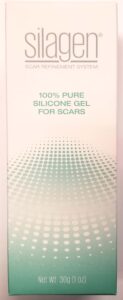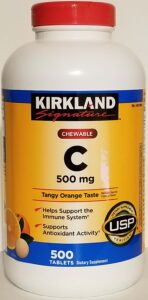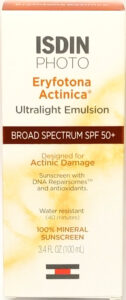
Maybe you have just had your top surgery and are in the early stages of healing.
Or, perhaps you are scheduled for the procedure and are just waiting to have it done.
In either case, it is likely that you want the results of your gender affirming FTM or FTNB top surgery to be as good as possible. This is true whether you are having the double incision free nipple graft mastectomy or the keyhole approach.
However, it is also quite true that most transmen and gender non-binary are happy just to be rid of their detested breasts and really are not very concerned about finer outcome issues. After all, it is a major win to no longer have to deal with their primary source of gender dysphoria.
My goal as a plastic surgeon performing FTM and FTNB top surgery is to provide each and every one of my patients with as natural a result as possible given individual circumstances.
Though a true cis-masculine appearance without any tell-tale signs of surgery is an impossible reality, it sure can be a goal to aim for.
The foundation for obtaining the most inconspicuous scars starts with the meticulous, skillful wound closure using the most prudent suture choices. The importance of this can’t be overestimated and overemphasized.
This is on your Plastic Surgeon.
Choose well!
Incisions that are repaired in haste, haphazardly or without thought of future consequences and the goal of excellence, result in inferior outcomes that can never be truly reversed by ancillary interventions.
To paraphrase some famous expressions: “You can’t make a silk purse (fine scar) out of a sow’s ear (inferior wound repair).”
Or:
“You can put lipstick on a pig (use scar gels, etc. on an inferior incision repair) but it is still a pig (inferior scar).”
Let’s assume that your incisions were repaired in a quality fashion. What can you now do to help facilitate wound healing and maximize the chances that your scars will heal as good as possible?
The following covers these important considerations. Realize that there can be variations and differences in recommendations among plastic surgeons that may not make a significant difference in the ultimate outcome.
In short, there can be more than one way to do things and still end up with the same outcome.
Incision Support
Minimizing tension (distracting forces) on the scar can lead to finer line scars long term that are relatively inconspicuous. Providing external wound support and splinting, such as with Steri-Strips (“butterfly tapes”), for at least two to three weeks can lead to better long term outcomes. So, if your doctor recommends that you keep your tapes on for a specific period of time – do so!
Activity Restrictions
As part of your body’s normal healing process, collagen (protein) is synthesized and deposited in the wound. If there are distracting forces acting on the incision site (forces that act to separate wound edges), your body will deposit even greater amounts of collagen in the wound. This translates into wider, thicker, firmer and elevated scars.
This is definitely not what you want!
Consequently, I recommend that my patients avoid activities that can exert distracting forces on their incisions for around 8 – 10 weeks postoperatively. This may involve chest work-outs, extensive and repetitive reaching and sports such as tennis, basketball, softball and golf.
Scar Mitigation Agents

There are certain scar mitigating (scar treating) agents that when applied to new scars have been shown to lead to superior long term outcomes – everything else being equal. Foremost among these are silicone gel and silicone sheeting. They should be used appropriately and faithfully for a period of between six to nine months postoperatively in order to reap their benefits.
For those individuals who are darker complected and are at a high risk for forming darker scars, skin bleaching agents can provide significant benefits in reducing this occurrence at least to some extent. These usually contain a hydroquinone formulation in a gel that can be applied along with the scar treating agent.
Nutrition

The wound healing process depends on proper nutrition so that the wound can heal appropriately. Deficiencies in amino acids, proteins, vitamins and minerals can lead to wider and weaker scars, longer healing times and even wound separation.
Individuals on a healthy, well balanced diet are less likely to have problems.
Those individuals on restricted diets, such as vegans and vegetarians, are more likely to develop these issues.
It is strongly recommended that our patients are on a high protein diet that includes a substantial amount of animal proteins – starting from around one month prior to surgery until at least one month after surgery.
High dose vitamin C and multi-vitamins that include zinc are to be taken as well during this period of time.
Smoking and Vaping
Both smoking and vaping can be extremely detrimental to the healing process. They can lead to decreased blood flow and oxygen to the affected tissues resulting in delayed healing, wound separation and even skin necrosis. For example, with the double incision free nipple graft technique, there can be total loss of the nipple-areola complex grafts, necrosis of the skin flaps, wound separation and very wide scars.
Particularly when undergoing life changing surgery, you want to minimize these risks.
Smoking and vaping must be completely stopped starting from one month prior to surgery until at least one month following surgery. Even just one indiscretion can lead to problems. I have seen this happen in patients.
Second hand exposure must be avoided as well during this period of time. Again, the detrimental results of such exposure have been seen in patients.
Sun exposure

After surgery, it is strongly recommended that the scars are protected from sun exposure for at least six to nine months. This applies to using tanning booths as well.
If you will be spending a lot of time outside in the sun and just wearing a T-shirt, it is recommended that you consider wearing one with a sun protection factor (spf/upf) of at least 45.
When going out in the sun without a top on, either a sun block with zinc oxide or titanium or a sunscreen with a 45 spf or greater should be applied to the scars.
By following the above recommendations, you can help maximize the likelihood of obtaining more excellent results that you are seeking from your top surgery.
Steven H. Turkeltaub, M.D. P.C.
Scottsdale and Phoenix, Arizona





